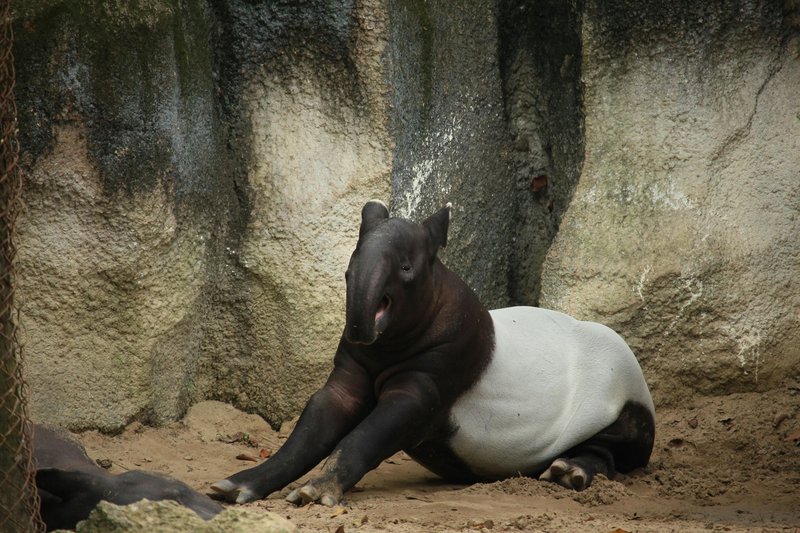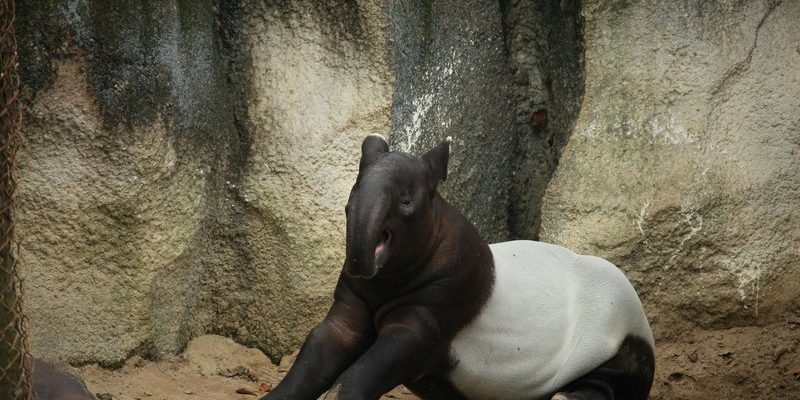
Imagine discussing folklore over a warm cup of coffee. You’re drawn into tales of mythical beings and creatures that shape our understanding of the world around us. The tapir’s presence in cultural narratives is no different. These stories often reflect the relationship between humans and nature, revealing how communities view and respect this unique animal. Let me explain how the tapir has become a symbol of harmony, mystery, and, sometimes, conflict in various cultural contexts.
Mythical Origins of the Tapir
In many indigenous cultures, the tapir is steeped in mythology. For instance, the Tupi-Guarani people of Brazil believe that the tapir was once a human who transformed into this creature as punishment for a transgression. This story serves as a reminder of the interconnectedness of all life, highlighting respect for nature. It’s fascinating to think that each time someone sees a tapir, they might be reminded of this rich myth, reinforcing a sense of responsibility toward wildlife.
In addition to punishment, tapirs are often seen as protectors within various folktales. Some stories portray them as guardians of the forest, where they help maintain the balance of the ecosystem. You might say they’re the gentle giants of the jungle! This narrative encourages a sense of stewardship among communities, urging them to care for their environment.
Interestingly, in Asian folklore, particularly in Indonesia, tapirs are sometimes linked to the Underworld. The stories suggest that these creatures can guide the souls of the departed, helping them navigate through the afterlife. Here’s the thing: viewing tapirs as spiritual guides adds a layer of depth to their existence, showcasing how cultures use animals to explore profound life concepts.
Symbolism in Art and Literature
When you look at artworks or read literature, the tapir often symbolizes unique traits. In many South American artistic expressions, the tapir is depicted with vibrant colors and exaggerated features, emphasizing its distinctive characteristics. Artists use the tapir to convey ideas of resilience and adaptability—traits that resonate with people’s experiences in challenging environments.
In literature, tapirs appear as characters in children’s stories that teach valuable lessons about friendship and harmony with nature. These narratives often portray tapirs as wise beings, capable of offering guidance to the other forest dwellers. This not only entertains but also instills moral values, showing how animals can represent essential life lessons.
Moreover, the tapir’s playful nature is sometimes highlighted in modern children’s books, where it embarks on adventures filled with whimsy and fun. It’s like you can hear the laughter resounding from the pages as kids learn to appreciate this unique animal. This portrayal helps foster curiosity about the tapir and encourages young readers to explore the wonders of wildlife.
Tapirs in Folklore Across Cultures
In Mayan culture, the tapir is often associated with creation myths. Some legends depict the tapir as a crucial figure in the formation of the landscape, playing a role in the shaping of rivers and mountains. This portrayal emphasizes the tapir’s importance as a creature that contributes to the very fabric of the earthly realm, making it a revered animal in these narratives.
You might also find tapirs mentioned in Amazonian folklore. Here, they are often seen as the embodiment of mother nature herself, representing fertility and abundance in the forest. This connection showcases how integral tapirs are to the ecosystem, reinforcing the idea that their survival is tied to human well-being and the health of the environment.
Additionally, in some African cultures, the tapir is considered a symbol of bravery. The tales often position this gentle giant as a fierce protector of its territory, with stories highlighting its ability to face threats despite its choice to remain elusive and gentle. This duality of being both peaceful and strong creates a complex image of the tapir in storytelling.
Modern Representations of Tapirs
In today’s world, you’ll find tapirs appearing in various forms of media—from animated films to social media content. Their unique appearance and quirky charm have made them a popular subject for artists and storytellers alike. You might come across a tapir in a cute cartoon, or even in a social media post that highlights its conservation status.
As conservation awareness grows, tapirs are often highlighted in campaigns aimed at protecting endangered species. Organizations frequently use the tapir to symbolize the importance of wildlife conservation, illustrating the deep-seated connection between this animal and the broader ecosystem. You could say that the tapir now serves as a bridge between cultures and modern conservation efforts.
Moreover, educational programs in schools frequently adopt the tapir as a mascot for environmental education. Children learn about biodiversity and the importance of protecting endangered species through engaging stories centered around this unique animal. It’s exciting to see how the tapir is helping to shape the next generation’s understanding of wildlife preservation.
Environmental Significance and Folklore
The tapir plays a vital role in maintaining the health of its ecosystem. As herbivores, they help control vegetation growth, which in turn supports various plant and animal species. In many cultural narratives, this ecological role is celebrated, reinforcing the idea that a balanced environment is essential for community survival.
In tropical rainforests, tapirs aid in seed dispersal, contributing to forest regeneration. This ecological function is often woven into local folklore, where communities share stories about how tapirs help plants grow and flourish. It’s like they’re nature’s little gardeners, nurturing the earth through their daily activities.
Communities also use tapir-related folklore to educate younger generations about sustainable living. By connecting ecological health with cultural narratives, they emphasize the importance of respecting nature. This storytelling approach is an effective way to instill values that promote cohabitation with wildlife.
As we wrap up, it’s clear that the tapir has made a lasting impression in cultures around the world. From ancient myths to modern stories, these gentle giants continue to inspire and educate communities about the delicate balance of nature. Their symbolism extends beyond mere representation; they remind us of our responsibility toward wildlife and the ecosystems we inhabit.
By exploring how the tapir is represented in various cultural contexts, we gain deeper insights into our relationship with nature. The stories we share about tapirs often reflect our values and help us realize the importance of conservation. So, the next time you see a tapir, whether in person or in a book, remember the rich cultural narratives intertwined with its existence. It’s not just an animal—it’s a symbol of harmony, resilience, and the endless wonders of our natural world.

